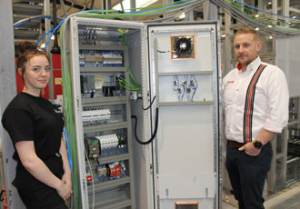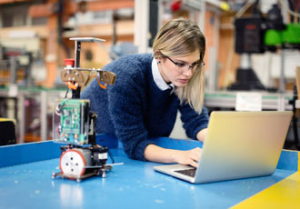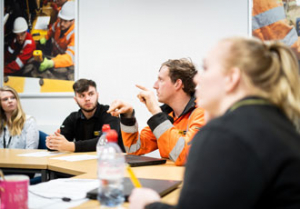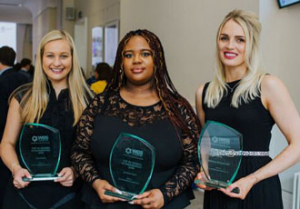Why are we still addressing the lack of women in engineering?

Women gained the vote 100 years ago this year, a momentous occasion that has gone down in history, so why is there still a gap within the engineering industry between genders? Electronic Specifier’s Anna Flockett investigates. In fact there is not enough diversity in the technology sector as a whole. Mike Butcher, Editor at Tech Crunch, said that this year’s figures show that in the technology sector 20% of the workforce are females, which has dropped from 33% in 2002.
My initial reaction to this was – what has happened in the last 16 years for that number to drop so drastically, when all we are doing is trying to encourage that number to grow? The conclusion I came to was that schools are much more focused on meeting targets and getting children to achieve the best possible grade they can, but not necessarily in all the subjects they want to. Why are there so many young girls in schools dropping maths and STEM subjects at such a young age?
Stem Subjects
A recent Women’s Engineering Society (WES) survey found that STEM subjects are not encouraged to girls, like they are to boys. This surely harks back to a bygone era that we should have left behind.
There is a lack of knowledge around exploring future career options in the industry for girls, and it acts as a bottleneck that essentially prevents girls from pursuing a future in engineering. If you look at history, men have always had a head-start on women, and we need to ensure this is a trait of the past, as we all want everyone to have equal rights and opportunities.
We need to inspire young girls and boys equally from a young age, and show them the routes they can take and what jobs they aspire to. The Trainline actually go into schools to show young girls what STEM subjects can help them achieve - but we do need more role models in the industry for women to look up to.
Education
To make matters even worse, education as a whole can be another hurdle that people can face, and not necessarily just women. Once you get to a certain age there is no form of free education offered to males or females. Lifelong learning is important, and the key to ensuring gender diversity is encouraging education after school. A lot of people come from different backgrounds, and we need to offer something for the people that feel they have missed the boat and want to get into engineering later in life. Education should never be a case of ‘it’s now or never’.
Looking over the past ten years since I left school, the education system has changed so much, with students now having to study until the age of 18 or take up an apprenticeship.
There is hope. Big changes were made to the way apprenticeships were conducted in the UK back in 2017, which saw the apprenticeship levy scheme brought in to help employers fund the young people they were training at work. However, despite this, last year actually saw a number of apprenticeships fall from the previous three years. The Government does have plans in place to create three million apprenticeships jobs by 2020 in the hope to bring the numbers back up.
An investment in people is the best type of investment.
Role Models
During London Tech Week Butcher hosted a panel based on the reasons why there aren’t enough women in tech, and asked his guest speakers; Clare Gilmartin CEO, Trainline, Chi Onwurah Shadow Minister for Industrial Strategy, Science and Innovation, and the audience, what we can do to change this.
Interestingly enough Onwurah, who works in Government explained how Parliament is the most diverse place she has ever worked in. Previously working in a chartered engineering firm for most of her 20 year career, she told the event that for the most part she was the only female, the only person of colour, and the only northern person in the company.
Having more role models in the industry would help inspire young people from a young age. Professor Dame Julia Higgins, President of the Institute of Physics was speaking recently at an event I attended and she stated loud and clear: “We need more role models collectively in every industry, as everyone needs a support team and potentially, a mentor. But this doesn’t have to be a woman, it can be men too.”
We can proactively encourage more women into engineering via females that can be looked up to as a source of inspiration. Role models are important so young girls can understand, go on a journey and get what they want.
Faith Wainwright, President of the Institution of Structural Engineers (IStructE) recently said: “Women need to look out for technical skills. We need to encourage women not to settle for the comfortable roles. There are plenty of opportunities out there for technical skills.”
This again made me think, why do some women perceive themselves to be worth less or less competent for certain jobs? And I believe I answered my own question when I recently attended a WES evening hosted by ARUP, where the barriers that women feel they are faced with were discussed, and amongst childbirth, women also felt that traditional views of some senior work colleagues were preventing them progressing in the industry.
This provoked another question: How easy is it to change the perceptions and beliefs of others?
The lack of females within the engineering and tech industry isn’t going to be solved purely from inspiring and encouraging more young girls into the right path for them. We also need to think about changing these old fashioned and stereotypical views that some of the older generation are struggling to let go.
Every industry needs to be challenged in order to move forward, and every sector needs to take responsibility. It is a group movement that needs the help of both males and females together to blow these misconceptions and prejudice judgements out of the water.
With organisations such as WES, and celebrations such as International Women in Engineering Day (INWED18), we are definitely moving in the right direction, and are acting upon our concerns, but we need to ensure this continues, and time will tell if numbers and judgements change.
This is 2018, which means that women aren’t just there to be the home makers, and the men come home to fix the leaky tap. This is a time where Clare Gilmartin, Chi Onwurah, Professor Dame Julia Higgins, and Faith Wainwright are all powerful females leading the way in our industry.
At London Tech Week I heard a phrase a couple of times that really stuck with me: “The future is bright and the future is equal.”
To read more about Women in Engineering click here.
If you enjoyed this story, you may also like this one.
For further reading on Women in Engineering click here.
Similar articles
More from Electronic Specifier
- Building the case for construction offices in 2021 20th May 2021
- UK construction: is the industry finally on the up? 26th August 2020
- Speaking to a younger generation of women in tech 11th August 2020
- Engineering firms encouraged to get ‘2020’ vision 6th January 2020












Write a comment
No comments